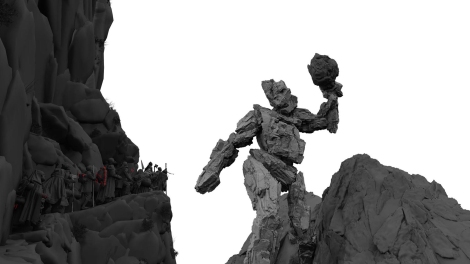Although the wait is nearly over for the familiar goblins and mystical forests of The Hobbit: An Unexpected Journey, senior visual-effects supervisor Joe Letteri says the only thing that remains the same for this iteration of Peter Jackson’s fantasy films is on the surface. The digital tools that brought countless Orcs to life and gave Gollum his distinctive distorted face are virtually unrecognizable from those used a decade ago for the The Lord of the Rings trilogy.
“It’s changed almost completely,” Letteri says. “On the outside, you want Gollum to look like the same character, but he’s completely different (under the hood).”
The biggest change from the first set of films is the way that actor Andy Serkis’ performance is captured and analyzed in order to create the digital character, according to visual-effects supervisor Eric Saindon. “Our facial capture has progressed leaps and bounds,” he says. “Now we actually capture all of Andy’s performance, when he’s acting with Martin (Freeman) in Gollum’s cage on set. We have a small camera attached in front of his face that captures his exact facial performance. Rather than an animator going in and doing it frame-by-frame, the computer analyzes Andy’s performance and then fires Gollum’s muscles to do the exact same thing. So the first half of the animation, which is the raw mo-cap data, is really Andy.”
“We know so much more about how the face works,” Letteri adds. “When people communicate face to face there are so many things that are going on that you really have to study now and put into the characters. We hope that people recognize that there’s this extra layer of depth.”

While Gollum takes a bit of a back seat to the other myriad creatures in The Hobbit, the film’s team at Weta had plenty of other digital characters to create, including the formidable stone-giant and its complex sequence. The crew shot the actors on a very small set climbing a hill along a rock wall, and every other element was added digitally after the fact, including the rain. “We did try to capture rain on set; it worked OK, but it was very easy to get rain on the mirror for the 3D, and then the stereo breaks instantly. The lighting was (also) very hard to control with the rain. So we did it for about a day and then we decided that it would be better just to do the rain in post. Then we added the stone giants, which are basically these mountains that come to life to have a thunder battle.”

Saindon admits that sometimes it’s tough to tell the practical effects from the digital, which is exactly the level of detail the team hopes to achieve.
“Your eye is not easily fooled,” Letteri says. “We all go to the movies because we want to be fooled, but on the other hand we want to be fooled really well.”

